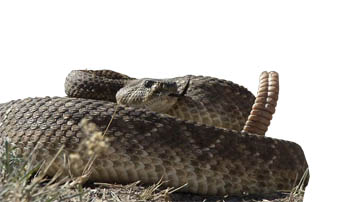Outdoor
Texas Parks & Wildlife Department wants to ban gassing rattlesnakes

By contributing writer Peggy Browning
What happens when you spray gasoline or other toxic chemicals into caves, between crevices of rocky outcroppings, or down the burrows of animals on the rolling plains?
When faced with noxious fumes, slow-moving, groggy rattlesnakes will inevitably emerge from their natural habitats. They are often sickened by the gassing and some of them die on the spot where their lairs were sprayed.
When the snakes retreat from their hiding places, they are accompanied by all the other inhabitants of the poisoned area. Other species of animals besides the rattlesnakes are affected by the gassing of their environment.
They are the innocent bystanders of the animal world. This includes other species of snakes as well as lizards, toads, prairie dogs, rabbits, and other burrowing animals. Gassing does not discriminate. It kills, sickens, or displaces all wildlife in the area affected.
Since 2010, The Texas Parks & Wildlife Department has been questioning this indiscriminate method of rattlesnake capture and has been working on banning the gassing of rattlesnakes. Texas hopes to join thirty other states that have already banned the use of gas and other chemicals for rattlesnake capture. To read more pick up the April 2014 issue of North Texas Farm & Ranch.
Outdoor
Parting Shot: Dogs, Pigs, Goats, Oh My!

By Jelly Cocanougher
What an extraordinary end to the Wise County Youth Fair – a fantastic opportunity for the Heart of a Champion participants to show. From rabbits to lambs, to pigs to dogs – we’ve seen it all. Through this unique event, the Heart of a Champion Livestock show aimed to promote confidence, friendship, and a sense of accomplishment within our amazing community. Everyone worked tirelessly to create an environment that fosters growth, camaraderie, and a shared passion for agriculture. Until next year!
Outdoor
Grazing North Texas: Rescuegrass

By Tony Dean, [email protected]
If moisture is adequate, there are several winter annual grasses that dominate the landscape during early spring in Texas. One of the most common is Rescuegrass.
This winter annual is native to South America but grows over much of the United States and can be found in all ecoregions of Texas. Rescuegrass is easily recognized by its flat seed head.
Numerous seed heads produce seed that is transported by animals and can quickly spread to other areas.
To read more, pick up a copy of the April issue of NTFR magazine. To subscribe by mail, call 940-872-5922.
Outdoor
The Garden Guy

By Norman Winter | Horticulturist, Author, Speaker
The National Garden Bureau has designated 2024 as the ‘Year of the Angelonia’ and I am in full celebration mode. As I was preparing for my contribution to the celebration, I was, however, sent into taxonomic trauma.
For the last 26 years of deep love for the Angelonia, or summer snapdragon, I have told everyone via newspaper, radio and television that they were in the Scrophulariaceae family. Since most gardeners don’t like those words, I modified or simplified the snapdragon family, but somebody has tinkered with green industry happiness and moved Angelonia to the Plantaginaceae or plantain family. I immediately reached out to my friend Dr. Allen Ownings, Horticulture Professor Emeritus with the Louisiana State University AgCenter. I said, “Did you know this, or better yet, did you do it?” He said, as I expected, that the Taxonomist group had done it. This reminded me that someone once said taxonomists have to eat, too.
To read more, pick up a copy of the April issue of NTFR magazine. To subscribe by mail, call 940-872-5922.
-

 Country Lifestyles1 year ago
Country Lifestyles1 year agoScott & Stacey Schumacher: A Growth Mindset
-

 Equine7 months ago
Equine7 months agoThe Will to Win
-

 Country Lifestyles7 years ago
Country Lifestyles7 years agoStyle Your Profile – What your style cowboy hat says about you and new trends in 2017
-

 Country Lifestyles4 years ago
Country Lifestyles4 years agoAmber Crawford, Breakaway Roper
-

 HOME7 years ago
HOME7 years agoGrazing North Texas – Wilman Lovegrass
-

 Country Lifestyles7 years ago
Country Lifestyles7 years agoDecember 2016 Profile, Rusty Riddle – The Riddle Way
-

 Country Lifestyles8 years ago
Country Lifestyles8 years agoJune 2016 Profile – The man behind the mic: Bob Tallman
-

 Outdoor9 years ago
Outdoor9 years agoButtercup or Primrose?






